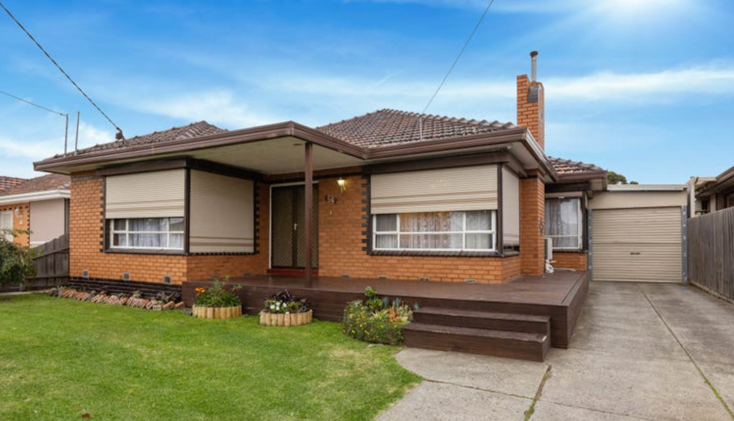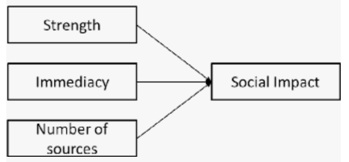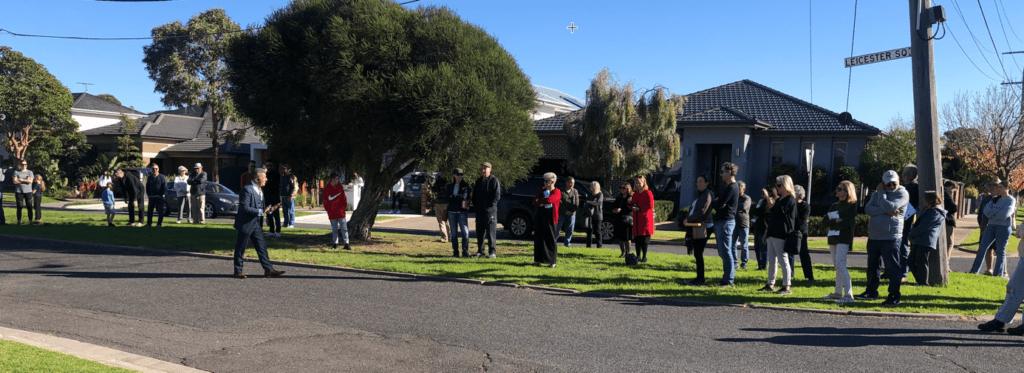Yesterday was a two-auction day for us, and while neither auction went our way, both were intriguing to participate in.
Each showcased a remarkable example of social impact theory.
The first auction was that of a four bedroom, triple fronted brick 1960’s house in Sunshine West. The area is well represented by many of these types of houses, and hence comparable sales analysis is not all that difficult to complete with a high confidence level.
In a moving market, a buyer will need to assign a ‘stretch budget’ when participating at auction because it is likely that a sales result could set a (small) new record for a specific category of dwelling in a given suburb.
Yesterday’s auction was well-attended and four bidders participated in the auction, us included. The property price guide was increased through the campaign, with a sudden jump from mid-sevens to $805,000-$860,000; possibly indicative of an aggressive pre-auction offer that was rejected.

The final stages of the bidding were down to us and an opposition advocate. Our stretch budget was applied and a quick fire bid of $841,000 back at the advocate appeared to knock her out of the race. Her rapid fire bids stopped and her demeanour changed. The agent commenced the final auction call. Armed with an ear piece in her ear and a direct line to her buyer, it was obvious that the intensity of the situation, the scarcity of the product and the fact that another buyer with an apparent rational approach was still bidding initiated a new budget discussion under extreme auction pressure.
Unsurprisingly, it appeared that her buyer decided to increase their bidding limit and the hammer landed $24,000 higher.
In the scheme of things, I don’t think it was an overpayment. It was merely $4,000 higher than our final stretch bid. However, it was an emotional reaction to what should always be a rational process. The buyer may indeed be thrilled that they applied that last minute stretch and secured the keys.
This thirty second event was a perfect example of social impact theory; “Created by Bibb Latané in 1981, Social impact is the result of social forces including the strength of the source of impact, the immediacy of the event, and the number of sources exerting the impact”. (Source: Wikipedia)

In the case of an auction, the strength of the source of impact is the sheer scarcity of the property. There is no other identical product. While there may be other triple fronted 4BR brick houses in Sunshine West, they aren’t this one.
The immediacy of the event is obvious. It’s an auction; fifty people are watching, no other bidders are standing other than the one holding the bid, and the auctioneer is holding a gavel and screaming at the underbidder.
The moment is nigh. The property will be knocked down in a matter of seconds.
The final social force is the number of sources exerting the impact. Social proof demonstrated that the property was desirable because three others wanted to purchase it.
It was a perfect trifecta for an emotionally triggered price-reset.
As Tom Stafford states in an interesting article; “Auctions put you in intimate contact with other people who are all providing social proof that the sale item is important and valuable. The competitive element of auctions is crucial to provoking our irrational buying behaviour. Once we’re involved in an auction we’re not just paying to own the sale item, we’re paying to beat other people who are bidding and prevent them from having it.”
And the auctioneer is always very good at reminding us that there is no silver medal.
This leads me to the subsequent auction we attended in Seaholme; a not-so-well known, wonderful seaside suburb wedged between Williamstown and Altona.
The crowd was supported by neighbours and interested onlookers, all keen to see what this fully-detached, generously proportioned four bedroom townhouse could sell for.
The agent entertained the crowd and happily took my opening bid, (matching the bottom of the quoted $900,000 – $990,000 range). He read the crowd beautifully, quickly recognising who the likely final bidders would be. This particular auction also had four bidding participants, however the final dual was between owner-occupiers who were reluctantly increasing their bids despite shaking their heads and burying their hands in their pockets, multiple times.
The agent focused their attention on the scarcity of the product at every opportunity. From taunting the crowd about the pace of the capital growth in the area, to reminding each couple that they could claw back the keys with just one more bid, he played to their emotions superbly.
“If you miss this auction today, you’ll likely pay more in a few months’ time for an inferior property,” he called.

Auctioneer antics? For sure, but it was his careful balance of applying time and pressure that resulted in some $40,000 of additional bids above and beyond where the auction almost initially stopped. He bought them time when the gravity of the situation required them having a chance to each discuss with their partners. He carefully applied pressure and reminded them of the scarcity when he required a bid to keep the momentum rolling.
The hammer fell $100,000 above our stretch price and roughly $40,000 above where both the winning bidder and the underbidder signalled openly that they were ‘out.’ Maybe after waking up today, the winning bidder is thrilled they stretched and secured the keys, but maybe they are stressed about the price and their newest obligation. Without asking them, we’ll never know.
As Tom Stafford’s article states, “First, auctions use the principle of scarcity, whereby we overvalue things that we think might run out. Auction items are scarce in that they are unique (only one person can have it), and scarce in time (after the bids are finished, you’ve lost your chance). “
Buyers need to be prepared for high pressure, high stakes experiences before they arrive at the auction if they wish to set a rational stretch price. This requires imagining the auction unfolding, and picturing themselves in that final dual where ‘winner takes it all’ applies.
Taking the time to think through a sensible, feasible and affordable stretch price before auction day arrives is what we always recommend.
REGISTER TO OUR NEWSLETTER
INFORMATION
CONTACT US
1A/58 ANDERSON STREET,
YARRAVILLE VIC 3013
0422 638 362
03 7000 6026
CATE@CATEBAKOS.COM.AU
